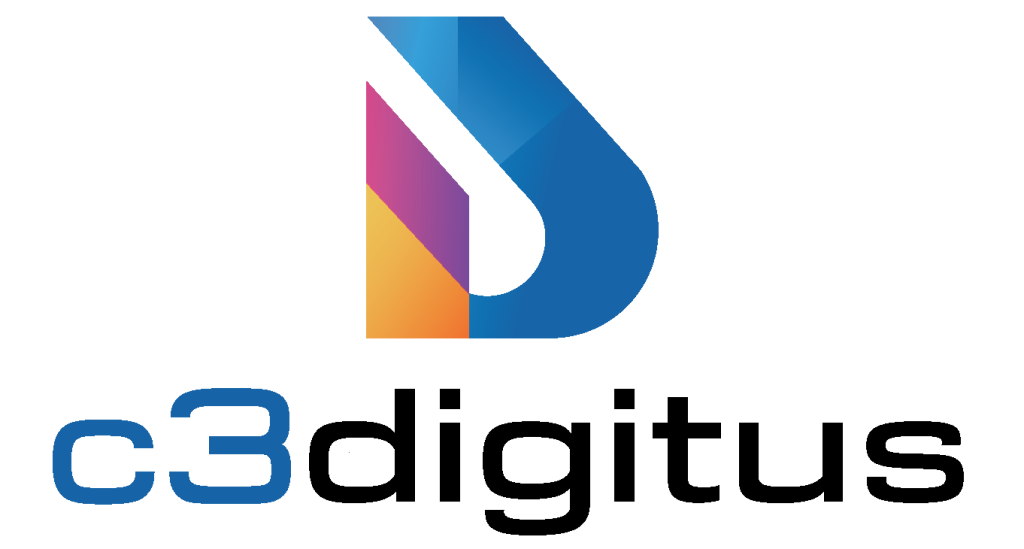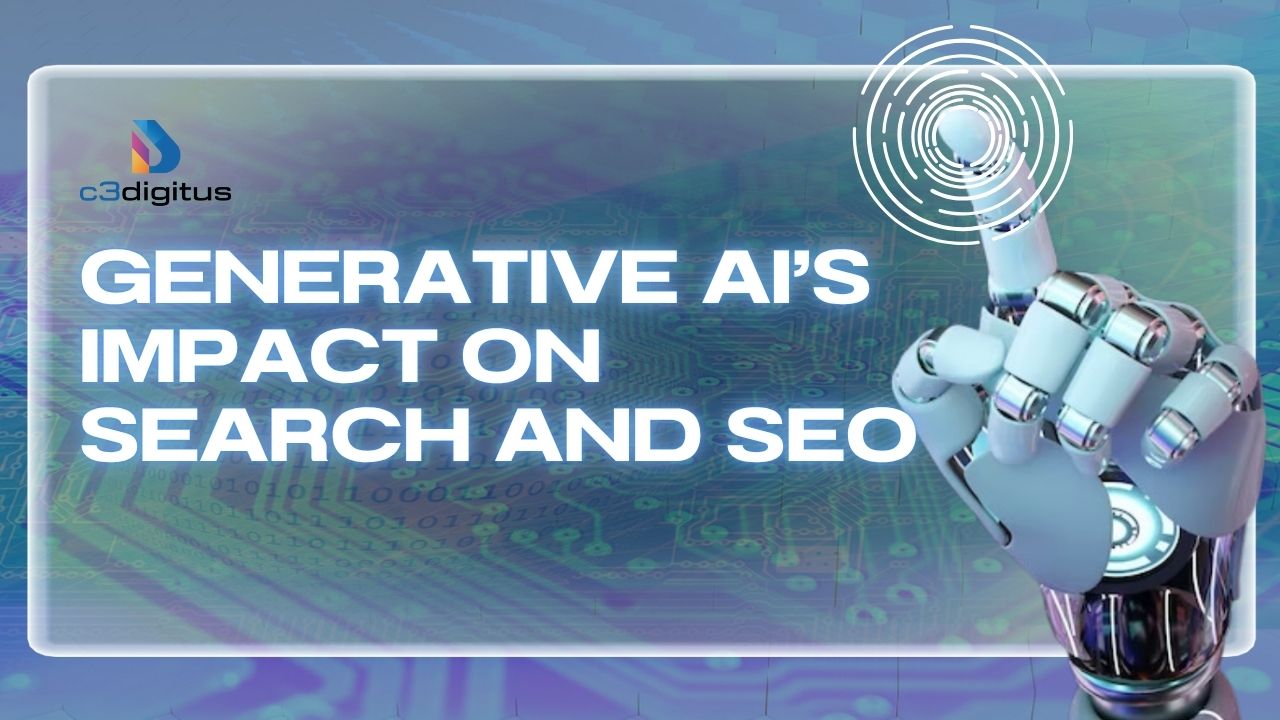Introduction & The Rise of Zero-Click Searches
Generative AI is fundamentally changing how people discover information and brands on the internet. Google’s AI-powered overviews, ChatGPT, Perplexity, and other tools now provide instant answers, often bypassing traditional “10 blue links” altogether. For marketing leaders and SEO strategists, this raises an urgent question: How do you stay visible when your audience stops clicking… or at least clicks a whole lot less?
We’re at an inflection point. It’s no longer just about where you rank in search results; it’s about whether your brand appears in AI-generated answers, summaries, and conversations. This shift demands what we call “Search Ecosystem Optimization”—ensuring your brand is discoverable, trusted, and referenced across every channel where people seek answers, not just in Google’s search results.As per a recent McKinsey report, generative AI could add up to $4.4 trillion in annual productivity, with marketing and sales capturing a large chunk, potentially boosting marketing productivity by 5–15% (about $463 billion yearly). This massive potential is forcing businesses to adapt.

Zero-Click Searches: A Wake-Up Call for Marketers
One of the clearest signs of this new landscape is the rise of “zero-click” searches—queries that end without any user clicking through to a website. According to a 2024 SparkToro study, nearly 60% of Google searches now end without a click. For every 1,000 Google searches in the US, only about 360 result in a click to an external site.
So why are zero-click searches booming? This trend didn’t start with generative AI. Google has long offered quick answers, maps, and calculators that satisfy queries immediately. But generative AI has taken it to another level. AI-generated answers deliver summaries, step-by-step instructions, and recommendations right in the search interface—no click required.
For businesses relying on search traffic, this is a major shift. Fewer clicks mean fewer visitors, and early data backs it up. An analysis by Search Engine Land found Google’s AI overviews could drive a 60% decrease in click-through rates, leading to a 30% drop in organic traffic. Meanwhile, Chegg and HubSpot have both reported dramatic declines in search traffic. Chegg even called AI answers a “serious threat” to their business.
Even major news publishers aren’t immune. As per Press Gazette, Google’s share of outbound search traffic dipped below 90% in late 2024, for the first time in over a decade, while alternative AI platforms like ChatGPT drove only <0.1% of traffic to news sites in early 2025.
Why Zero-Click Behavior Matters
The implications go beyond simple traffic loss. It’s a sign that the user’s journey is increasingly happening without ever reaching your website. Users are still searching, but the AI itself is becoming the destination. This changes how we think about SEO:
It’s not just about ranking #1 anymore.
It’s about whether your insights are chosen and cited in the AI’s response.
Even if users don’t click, the AI might still present your brand as a trusted source, offering a new kind of brand exposure.
The challenge? Clicks are shrinking, but the need to stay top-of-mind is more urgent than ever.
How AI Picks Answers (It’s Not Just the #1 Result Anymore)

In the old world of SEO, ranking #1 was everything. In the new world of generative AI, being the “top result” doesn’t guarantee you’ll be the answer. AI systems pull from a mix of sources to create the best response, sometimes ignoring traditional rankings altogether.
For instance, Google’s AI Overview might highlight a snippet from a site that’s buried deep in the organic results, simply because it most directly answers the question. According to a Seomator study, ChatGPT’s cited results overlapped with Google’s top results only 12% of the time. That’s a massive gap, proof that relevance and clarity matter more than pure ranking.
AI models prioritize concise, clear answers. A small blog post that nails a niche question might win out over a massive, well-known site if its answer is sharper. So while E-E-A-T (Experience, Expertise, Authoritativeness, and Trustworthiness) remains crucial for overall visibility, snippets that are direct and factual have a new power.
Authority and Relevance in the AI Age
The good news is that authority still matters, AI tools don’t want to risk giving misinformation. They’re more likely to pull from trusted, well-linked sites and content that clearly signals expertise. For instance, as per Google’s documentation, using schema markup and proper structure can help AI identify and attribute your answers.
But the content itself is king. If an AI tool thinks your paragraph best answers the question, regardless of your overall domain rank, it might choose you over a bigger competitor. That’s an opportunity for smaller brands and newer players.
The Power of Snippets and Structure
One clear takeaway? Structure matters. AI models are designed to parse text efficiently, so well-labeled headings, short paragraphs, and bulleted lists make it easier for them to pull and cite your content. Pages that ramble or bury their key insights risk being ignored, even if they rank well.
In fact, Google has publicly recommended using FAQ sections, clear headings, and structured markup to help its systems understand content better. This aligns perfectly with how generative AI reads and uses information.
Traditional SEO vs. AI Visibility

This shift doesn’t mean you can abandon traditional SEO. Indexing and crawlability remain foundational—if your site isn’t properly crawled and indexed, you’re invisible to AI-powered search results. As per a Seomator report, technical SEO fundamentals like mobile-friendliness, load speed, and structured data are still non-negotiable.
But some old-school tactics are fading. Keyword stuffing? Not useful, AI models understand natural language and context better than ever. Instead, they prioritize comprehensive, clear answers that match user intent.
For marketers, the takeaway is clear: SEO isn’t dead—it’s evolving. You still need to be discoverable, but you also need to craft content that’s snippet-ready, factual, and relevant. That’s the path to winning in the AI-powered ecosystem.
The New Reality: Being Part of the AI Answer
Even when you don’t get the click, being part of the AI answer is a new kind of win. If the AI includes your brand or product in its answer, you’re still building mindshare and trust, essential for long-term growth.
Technical SEO Still Matters, Maybe More Than Ever
Even though AI-powered search has shifted how users get answers, technical SEO remains a critical foundation. If your content isn’t discoverable, indexed, and structured in a way AI can read, it simply won’t show up in AI answers.
As per a Seomator report, technical elements like crawlability, load speed, and mobile-friendliness still have huge importance. If your site isn’t crawlable or has blocked resources, AI-powered engines like Google’s overviews or Bing’s chat-based browsing can’t access your content. That’s the first hurdle to even getting considered.
Beyond that, HTML clarity and structured markup are essential. Many AI crawlers and search bots don’t execute JavaScript—so if your page loads crucial content via scripts or interactive elements, AI tools might miss it entirely. As a best practice, consider using server-side rendering or static snapshots to ensure AI and search crawlers get the full picture.
Structured Data: Helpful, but Not a Silver Bullet

Structured data (like schema markup) has long been a tool to help Google understand content. In the AI era, it’s still worth doing, but with caveats.
Google has stated that schema doesn’t directly boost AI inclusion yet—the AI’s natural language understanding takes precedence. However, schema markup does help Google’s overall indexing and might become more influential as AI models evolve. So adding schema to FAQs, product details, and how-to guides is a safe bet for future-proofing.
Metadata & Keyword Use: Shift the Mindset
Old habits die hard, but it’s time to stop obsessing over exact-match keywords and start focusing on clarity and context.
Generative AI models (like the LLMs behind Google’s overviews and ChatGPT) don’t “read” metadata the same way humans do. They rely on the actual page content and its clarity. That means your meta description might not show in an AI summary, but having clear headlines and structured paragraphs is still key. Your H1s and H2s should frame questions and answers directly—like mini-FAQs baked into your pages.
As one SEO veteran put it, “Focus on natural, authoritative language and clear structure. AI sees and uses content in ways even Google’s classic algorithm doesn’t.”
Content Freshness and Accuracy: Stay Updated!
Another crucial piece? Content freshness. AI tools might pull from older data or outdated pages if newer, more relevant content isn’t available. As generative search results evolve, Google’s AI overview tries to favor fresh and up-to-date info, especially for queries that rely on timeliness.
So, routinely update key pages, and add fresh insights when relevant. A stagnant page might rank well in traditional search, but AI models value freshness in the fast-changing digital world.
The Emerging World of LLM Directives
A final frontier for technical SEO: directives for AI bots. Right now, there’s no universally adopted “llms.txt” standard like robots.txt, but that might change. Some publishers are already using OpenAI’s GPTBot exclusions or crafting policies for AI model use. Stay tuned—this could soon become an SEO tool to either allow or block AI models from training on your data.
For now, unless you’re actively trying to block AI usage, the smart play is to keep your important content accessible and in plain HTML, so you’re eligible for inclusion in AI answers.
Measuring Success in an AI-First World

Rethinking Metrics for AI Visibility
As AI-powered search takes center stage, marketers need new ways to track how it impacts visibility and brand growth. The classic playbook of rankings, clicks and conversions doesn’t fully capture this new reality. Let’s look at how to measure what matters in an AI-first world.
Impressions and Mentions vs. Direct Clicks
One key insight is that impressions and mentions often matter as much as direct clicks now. For example, in Google Search Console, you might see impressions remain steady or even increase while clicks decline. This is a classic sign of zero-click search in action: your content is still being shown or cited, but users are getting their answers without leaving the search result page or AI chat. Tracking the gap between impressions and clicks can reveal where AI is siphoning off engagement. As one SEO expert said, impressions alone don’t pay the bills, but they do show where your brand is present in the conversation.
Spotting AI Referrals
Another tactic is to watch for referral traffic from AI sources. It’s rare, but it’s growing. For example, ChatGPT’s browsing mode can include clickable citations, and Bing’s AI chat sometimes does the same. These referrals often show up with odd URL strings or utm_source tags like openai or bing. While the volumes may be small, they’re worth tracking as a sign your content is being featured in AI-driven answers.
Brand Searches and Direct Visits
Brand search and direct traffic are also key signals. If AI answers mention your brand, users might skip the link but search for you later or go straight to your site. An uptick in branded searches can be an indirect signal of AI exposure. Similarly, direct traffic might rise even as organic search clicks fall, showing that users still want to engage with your brand after seeing it mentioned by an AI.
Top-of-Funnel Redefined
You’ll also want to rethink how you define top-of-funnel success. In the past, a top-of-funnel blog post was all about driving traffic. Now, it might be about getting mentioned by an AI or becoming part of the broader knowledge base. This can feel like a step back in measurable ROI, but it’s actually a step forward in brand positioning. If a user asks an AI for the best tools or resources in your space and your name pops up, that’s still a form of early-stage influence, even if there’s no click.
Conversions and Bottom-of-Funnel Health
On the flip side, if your bottom-of-funnel conversions or sales start to drop in lockstep with organic traffic, that’s a clear red flag. It suggests you’re losing not just casual readers but also high-intent visitors. Keep an eye on revenue and leads from organic sources. If those stay stable while organic sessions decline, you might be seeing a shift where AI handles the lightweight queries and sends more serious buyers directly to your site.
Manual Spot-Checks and Brand Feedback
One emerging practice is spot-checking your presence in AI answers manually. Ask ChatGPT or Google SGE the questions your content answers best. See if your brand is mentioned or if your insights are showing up. This kind of audit can help you spot opportunities to create clearer, more AI-friendly content or to shore up weak areas where competitors are getting the mention and you’re not.Qualitative feedback matters, too. Check what customers and prospects are saying in sales calls or on social media. If they mention they saw you recommended by an AI, that’s gold. If they’re quoting outdated AI answers about your brand, that’s a problem to fix.

Competitive Benchmarking in the AI Era
Finally, keep a close eye on competitive benchmarking. Just as you used to track who ranked above or below you for top keywords, now you want to see who’s getting cited in AI-generated answers. If a competitor’s name keeps popping up in ChatGPT’s responses or Google’s AI Overviews, that signals strong AEO (Answer Engine Optimization) on their part, a competitive edge you’ll want to counter.
The New Measurement Mix
In short, measuring success in the AI era means combining classic metrics like conversions and revenue with new signals like brand mentions, impressions without clicks and AI-driven referrals. It’s a more complex picture, but it’s also a richer one. By adapting your measurement approach to capture these nuances, you’ll get a clearer view of how your brand fits into the new search ecosystem.
From SEO to Search Ecosystem Optimization

Moving Beyond Traditional SEO
The changes in how people find and engage with information today mean SEO can’t stand alone anymore. We’re seeing a shift from pure search engine optimization to a broader, more integrated approach: search ecosystem optimization. This mindset expands beyond Google rankings to consider all the places where people search, ask questions and make decisions, from voice assistants to AI chatbots.
Embrace Multi-Channel Discovery

One key strategy is embracing multi-channel discovery. Users might search on Google, ask a question in ChatGPT, browse forums like Reddit or Quora, or even turn to YouTube for a quick video answer. A brand that shows up in all these spaces is much harder to ignore. That means investing not just in your website’s SEO, but also in platforms where your audience hangs out. Publishing videos on YouTube, answering questions in relevant communities and building content that can be cited by AI models all play a part.
Build Brand Authority and Trust

Another pillar of ecosystem optimization is building brand authority and trust outside your own website. AI models look for content that’s trusted and referenced across the web. If your brand is mentioned or quoted by multiple reputable sources, that can improve your chances of being included in AI answers. It’s a modern twist on classic PR: mentions in respected media, partnerships, and thought leadership all help shape how the AI sees you.
Evolve Your Content for AI

Content also needs to evolve. AI doesn’t pull from long, rambling text. It looks for clear, direct answers that can stand on their own. That means structuring content so it can be easily lifted and cited. FAQ sections, bullet lists and clear headings can help, but it also means writing in a tone that’s authoritative and helpful. If you can answer a user’s question in the first paragraph and offer supporting detail below, you’re more likely to get included in an AI-generated answer.
Stay Technically Ready

Technical readiness is another essential part. AI crawlers and search bots don’t always navigate complex scripts or gated content. If your best resources are hidden behind forms or interactive elements, AI models might not see them. Ensuring your content is accessible and cleanly structured in plain HTML is a must for ecosystem optimization.
Build and Maintain Brand Trust

Brand trustworthiness is equally important. Misinformation spreads fast, and AI models want to avoid it. If your brand is known for accuracy and has a track record of reliable content, that increases your chances of being included in answers. This is where traditional SEO best practices meet modern brand-building: accurate citations, consistent messaging and transparent authorship all matter.
Watch for Future AI Integrations

Finally, it’s worth watching for future AI integrations. Some companies are already creating direct plugins or feeds for AI platforms. If your product or data could be directly integrated with AI assistants, that might be a new channel for discovery. While it’s still early for most brands, being ready to partner or integrate with these AI ecosystems could be a smart move in the long run.
Final Thoughts and Actionable Takeaways
Rethinking Your Strategy
The era of generative AI in search means rethinking your entire approach to visibility and engagement. The old SEO playbook of chasing keywords and rankings is no longer enough. Brands need to expand their thinking to cover how they show up across every digital touchpoint, from AI chatbots to voice search.
Focus on Ecosystem Presence
Instead of focusing only on how you rank on Google, think about how your brand appears in the broader ecosystem. That includes making sure your name comes up in AI answers, voice assistants and alternative search experiences. It also means investing in other channels where people search and ask questions, like YouTube, Reddit or even app-based discovery.
Double Down on Quality and Authority
Throughout this transition, the core principle remains: quality content and genuine authority win out. Brands that consistently provide clear, accurate and valuable answers will be the ones that AI models and search platforms turn to. That’s true whether you’re chasing organic traffic, AI citations or building trust in a crowded market.
Embrace Clear and Structured Content
As AI models pull information from the web, they’re looking for clarity and structure. Content that’s easy to parse, well organized and directly answers user questions has a much higher chance of being chosen. Think about how to rework your key pages to include concise answers, FAQs and supporting detail in a way that’s easy to extract and share.
Maintain Technical Excellence
Don’t let technical SEO slip through the cracks. Indexability, page speed and mobile-friendliness still matter. And because AI crawlers often skip JavaScript-heavy content, making your core insights visible in HTML is essential. These technical elements ensure you’re in the running to be included in the new AI-driven answers.
Align Your Team Around the Shift
Finally, bring your team along for the ride. Help them understand that clicks might drop, but impressions and brand mentions are new signs of success. That’s a mindset shift as much as a tactical one. Encourage them to track AI-specific signals and to treat brand exposure in AI answers as valuable, even if it doesn’t show up in traffic reports.
Your Next Steps

Here’s a quick checklist for moving forward:
- Audit your content for clarity and direct answers.
- Expand beyond Google, investing in other discovery channels and platforms.
- Update your measurement framework to include impressions, mentions and brand exposure in AI answers.
- Keep your technical SEO house in order for maximum discoverability.
- Stay curious and adaptable as new AI search features emerge.
The search ecosystem is evolving fast, and brands that adapt now will be the ones leading the way in this AI-first world.





